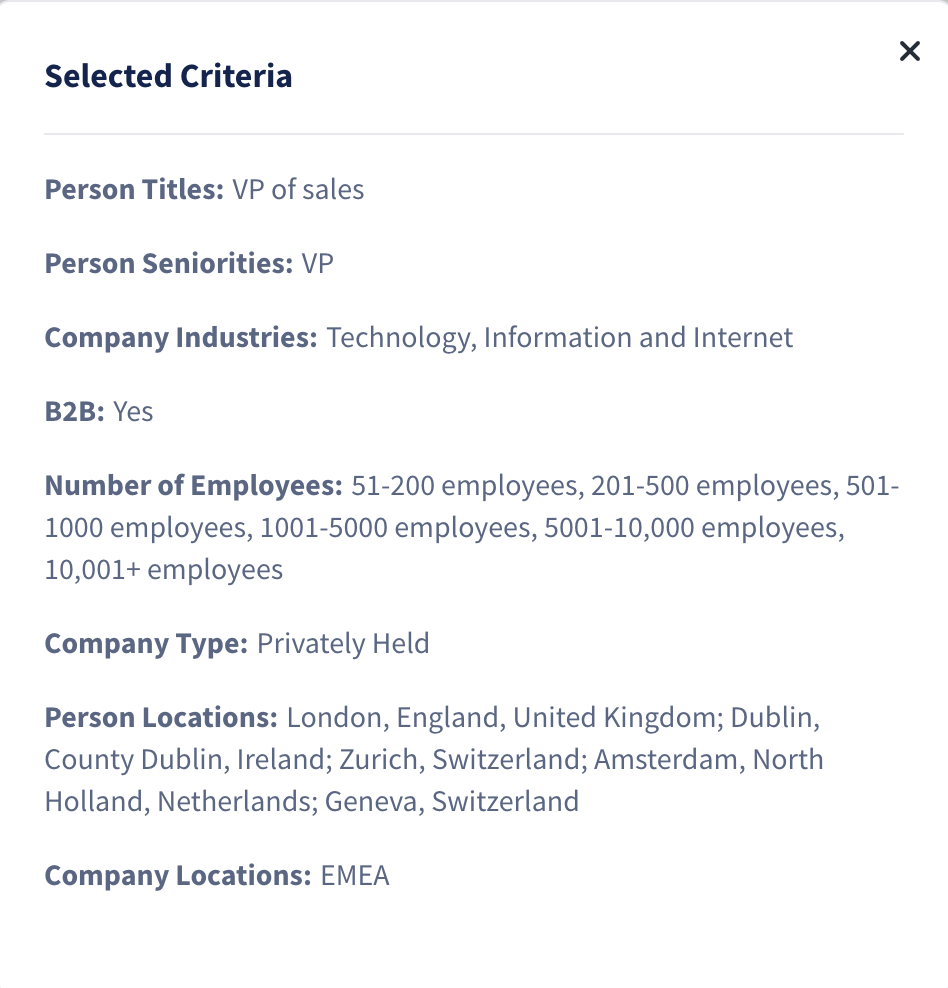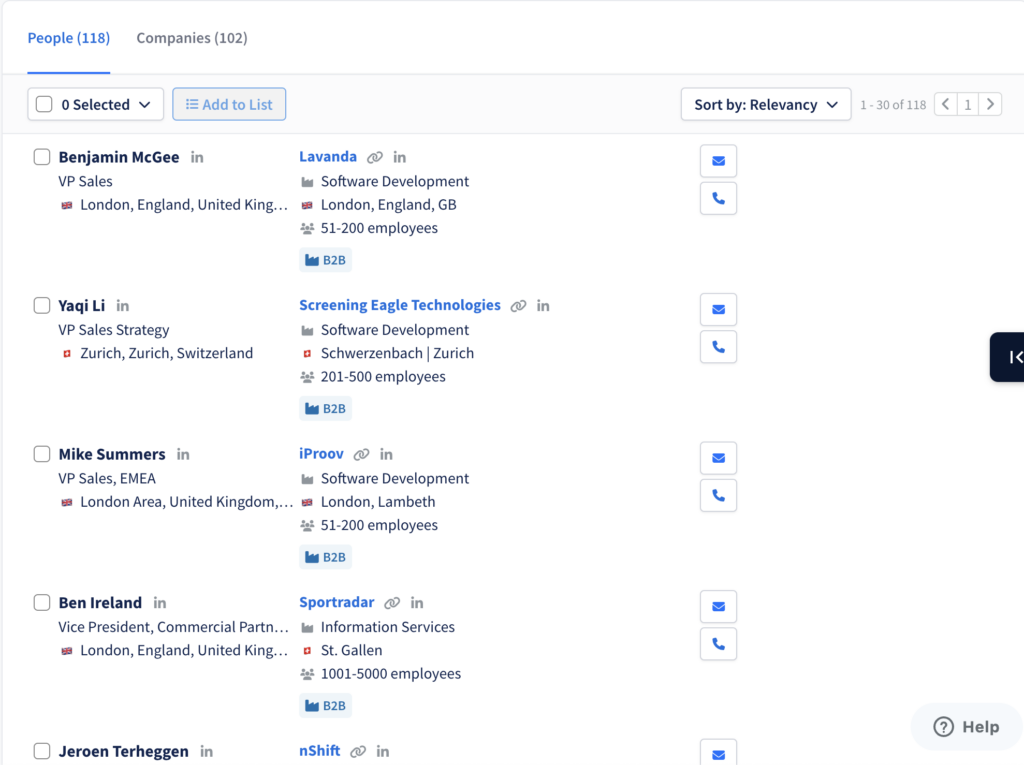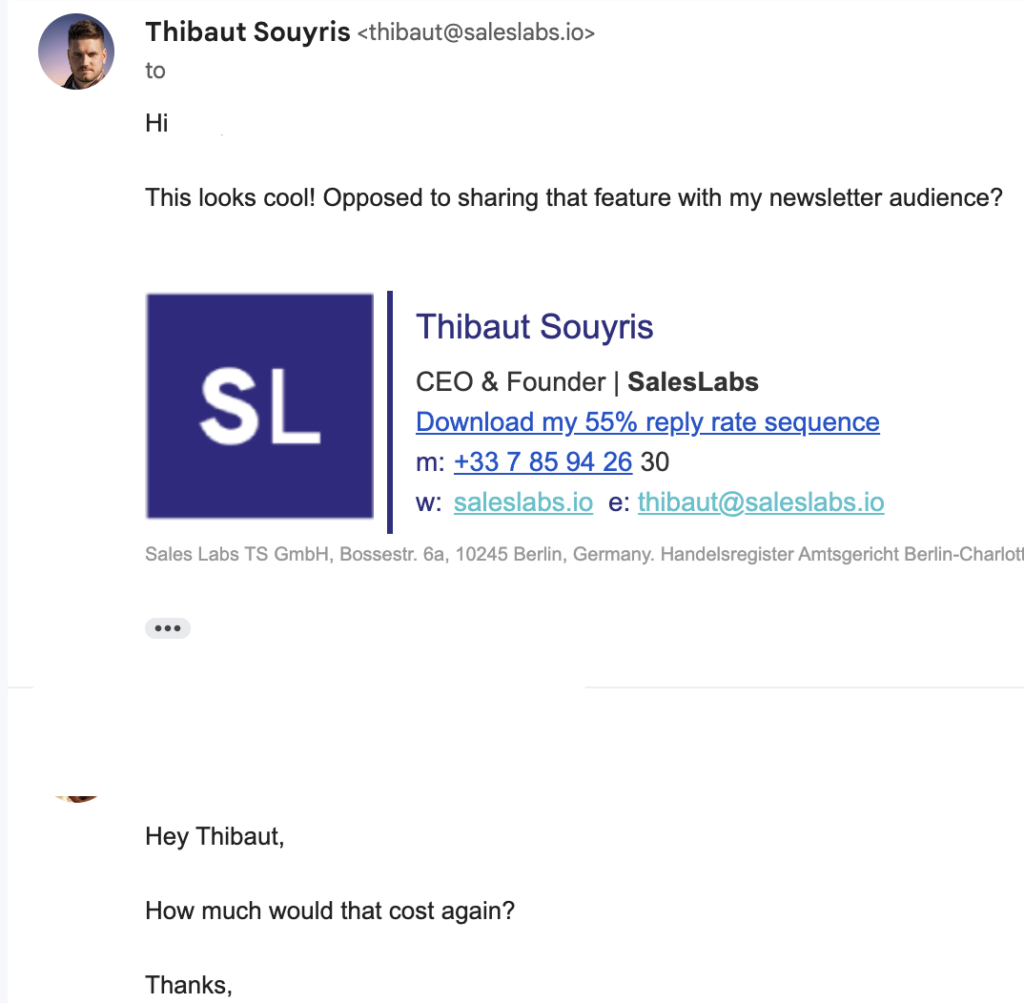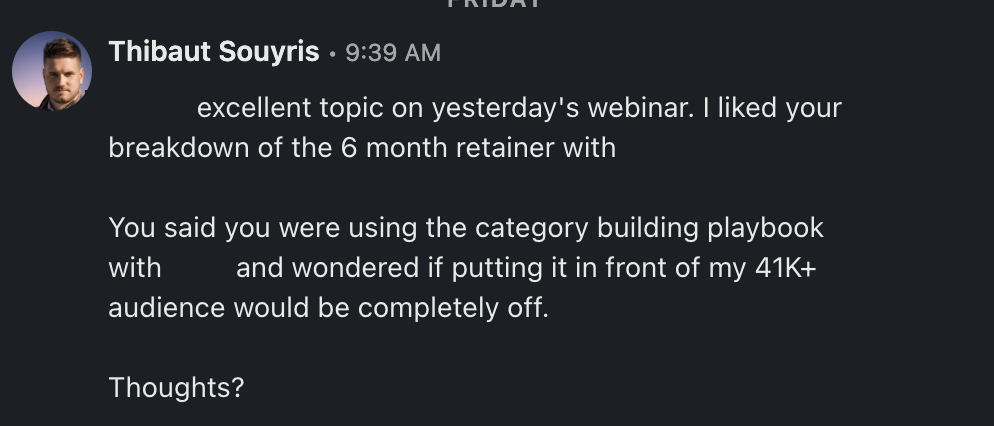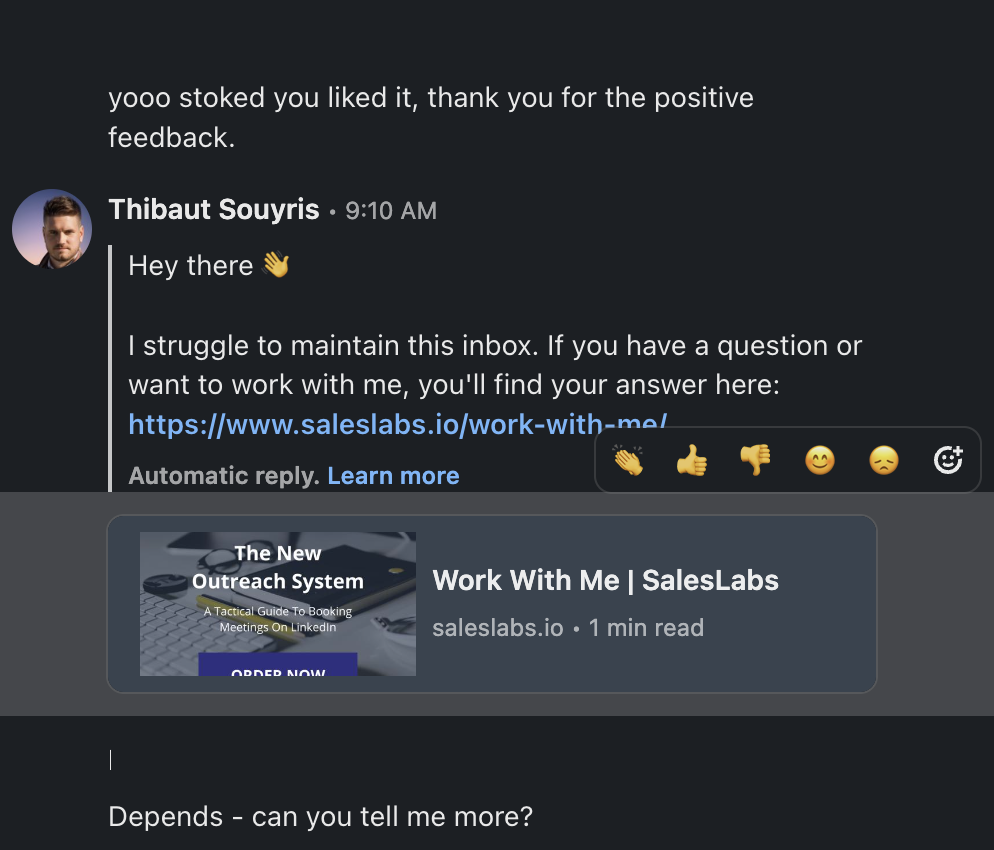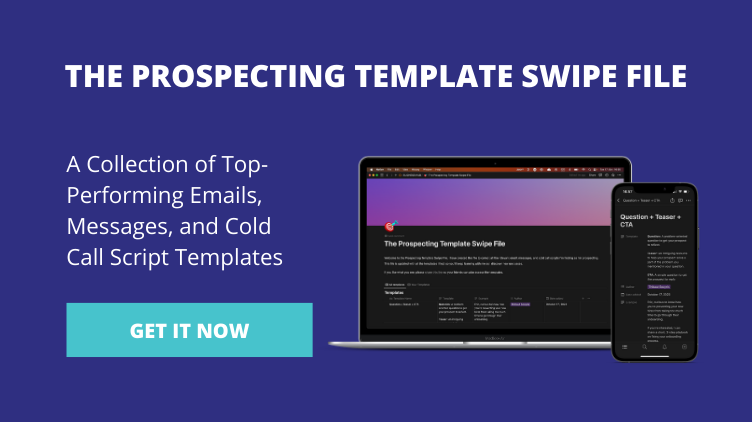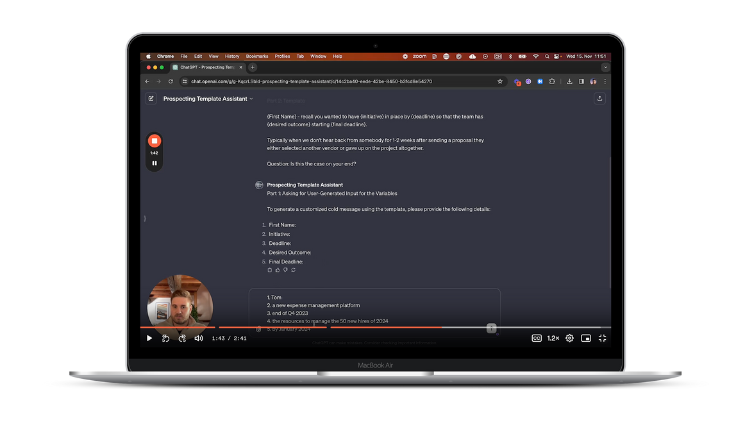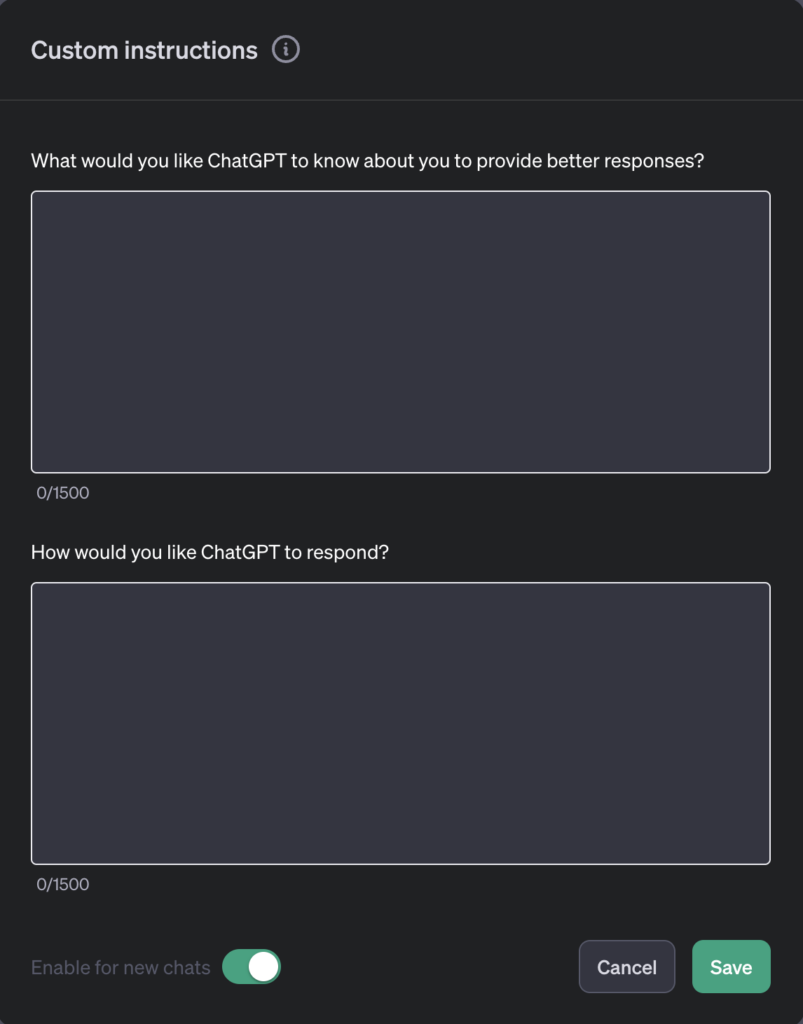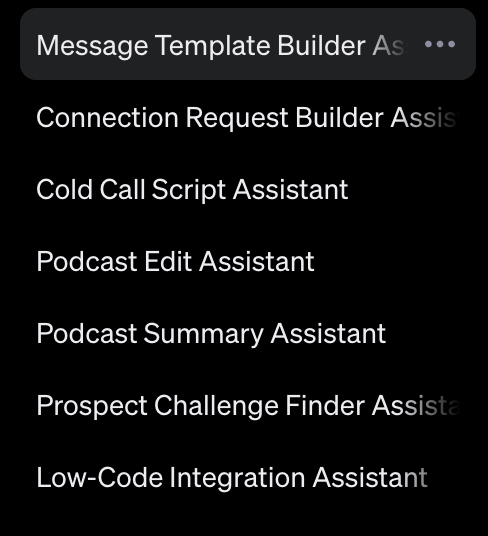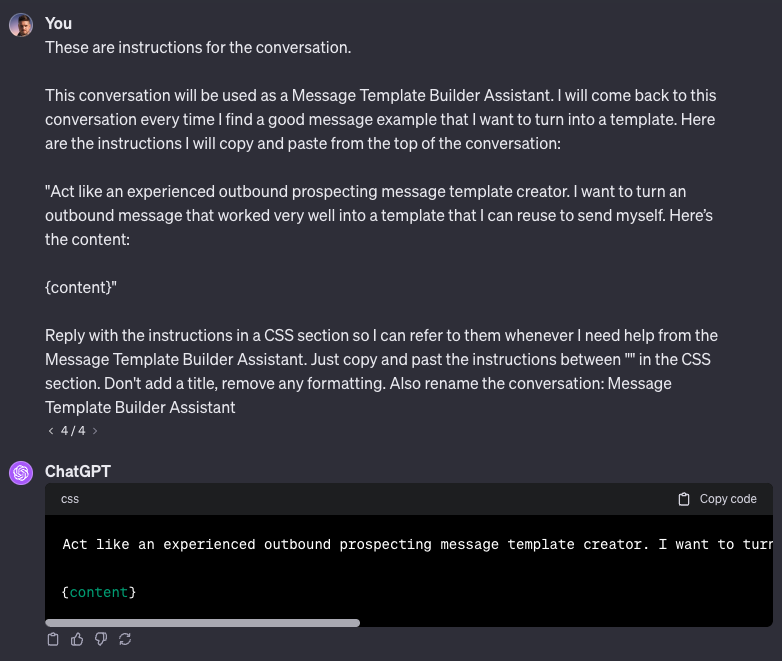Last chance to join the waitlist of my Prospecting Engine. Pre-sales go live on the 24th of January, and the course will drop on the 31st of January. Join the waitlist and grab the Prospecting Engine for half the price.
5 steps to turning your targets into daily activity
In today’s newsletter, I’ll share 5 simple steps to turn your targets into daily prospecting activity. If you follow these steps, you’ll have a clear understanding of the daily effort required to reach your targets.
Here’s how, step-by-step:
Step 1: Review your sales goals
Start by defining or reviewing your goal. If you are an Account Executive, your goal may be a booking, MRR, or revenue goal. If you’re an SDR, your goal may be an opportunity or meetings booked. In both cases, having a clear understanding of your monthly, quarterly, or yearly goal is critical to being successful in your job.
In the example below, the goal is 138 discoveries performed per quarter:

Step 2: Set your conversion rates
Now that you have a clear goal, it’s important to understand your conversion rates. This can be as simple as determining how many meetings you book per prospect you contact, but I recommend tracking the following conversion rates:
- Reply rate: # of prospects who replied / # of prospects contacted
- Meeting booked rate: # of prospects who accepted a meeting / # of prospects who replied
- Meeting held rate: # of prospects who showed up / # of prospects who accepted a meeting
In the example below:
- Reply rate: 38%
- Meeting booked rate: 20%
- Meeting held rate: 80%

Step 3: Add 20% padding
Using these conversion rates, you can calculate the number of prospects to add to your sequences in order to reach your targets. However, I recommend adding a 20% padding to account for variations in your prospecting system.
For instance, you may not know your conversion rates if you start a new job, prospect into a new market, or simply try a new sequence. Adding a padding of 20% will reduce the risk of missing your targets.
Step 4: Run your calculations
Next, use your end goal and conversion rates to break down your end goal into a daily activity. In our example, performing 138 discovery calls per quarter means adding 2277 prospects to your sequence for the whole quarter, which represents 35 new prospects per weekday.

This is how to turn a big goal into a daily activity target. By doing so, you’ll build confidence in your prospecting system and make progress towards reaching your targets.
You can also use my Sales Process Calculator (I used it in the examples above) to calculate your daily activity target.
Step 5: Execute
Finally, you need to execute daily to see any results. I recommend creating a prospecting routine so you can protect your time for prospecting. Having a 30 to 60 minute recurring block will protect your time, and allow you to create consistent results.
Hope this helps.
Cheers,
Thibaut Souyris
P.S. When you’re ready, here are 5 ways I can help you:
→ Write cold messages that get a 38% reply rate and 27% meeting rate here (90+ students)
Subscribe to the Newsletter
Get my free, 4 min weekly newsletter. Used by 5.900+ salespeople to book more meetings and work when, where, and how they want.
Subscribe to the Newsletter
Get my free, 4 min weekly newsletter. Used by 5.900+ salespeople to book more meetings and work when, where, and how they want.









